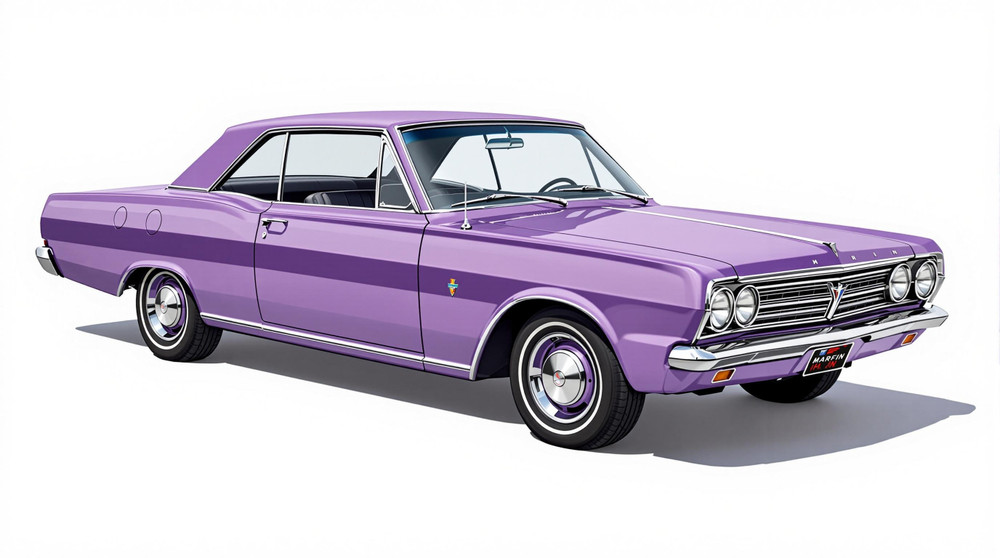Image of 1966 American Motors Marlin, Note: These illustrations use artistic license and may differ from actual historical models.
Performance Metrics
Fundamental Metrics
Emotional Appeal
MMP Rating
| Engine Specifications | |
|---|---|
| Engine: | 232 cu in (3.8 L) I6, 287 cu in (4.7 L) V8, 327 cu in (5.4 L) V8 |
| Displacement: | 232-327 cu in |
| Horsepower: | 155-270 hp |
| Torque: | 240-340 lb-ft |
| Compression Ratio: | 8.7:1 - 9.7:1 |
| Ignition System: | Conventional |
| Cooling System: | Liquid-cooled |
| Performance Specifications | |
| 0-60 Time: | 10-12 seconds |
| 1/4 Mile Time: | 17-19 seconds |
| Top Speed: | 115-120 mph |
| Transmission and Drive | |
| Drive Type: | Rear-wheel drive |
| Transmission Type: | 3-speed manual, 4-speed manual, 3-speed automatic |
| Fuel and Efficiency | |
| Fuel System Type: | Carburetor |
| MPG: | 10-15 mpg |
| Dimensions and Brakes | |
| Brakes: | Drum brakes |
| Wheelbase: | 118 in |
| Weight: | 3,400-3,600 lbs |
Note: Specifications for classic cars are given to the best of our ability, considering the limited and variant data available.
Introduction
The 1966 American Motors Marlin is a testament to an era when bold design and innovation were the driving forces behind automotive manufacturing. Born from the ambitious American Motors Corporation (AMC), the Marlin was a blend of muscle and sophistication, a car that sought to carve out a new niche in the mid-1960s auto market. As AMC's answer to the personal luxury car trend, the Marlin was distinctive for its fastback roofline and spacious interior, making it a standout model that still captures the imagination of classic car enthusiasts today. A notable moment in its history was when it served as the pace car for the Pikes Peak Hill Climb in 1965, showcasing its sporty appeal.
Design and Innovation
The Marlin's exterior styling was nothing short of dramatic, with its long hood, short deck profile, and sweeping fastback roof that tapered down to a stubby rear. The car's striking silhouette was complemented by a bold grille and squared-off rear fenders, giving it an assertive stance on the road. Inside, passengers were treated to a spacious cabin with high-quality materials such as optional vinyl or cloth upholstery and woodgrain accents. Technologically, it featured innovations like adjustable reclining seats and an optional center console with a shift command for automatic transmissions. Color options ranged from classic black and white to more vibrant shades like 'Marquesa Mauve' and 'Tahitian Turquoise,' with many opting for the latter to make a statement. The Marlin was available in one iconic body style—a two-door hardtop fastback—that became synonymous with its name.
Historical Significance
The Marlin's impact on automotive design was marked by its attempt to fuse muscle car aggression with luxury comfort. It set itself apart with its unique fastback design at a time when competitors were focusing on conventional coupes and convertibles. While it may not have been as commercially successful as some of its peers, the Marlin's design ethos influenced future models across various manufacturers, pushing the industry towards more adventurous styling cues.
Performance and Handling
Under the hood, the 1966 Marlin could be equipped with a range of engines from a 232 cubic inch (3.8 liters) inline-six to a potent 327 cubic inch (5.4 liters) V8, capable of propelling the car from 0-60 mph in respectable times for the era. Top speed varied according to engine choice but could reach upwards of 120 mph with the larger powerplants. On the road, drivers noted that despite its size, the Marlin handled with poise, absorbing bumps gracefully while maintaining composure on winding routes. The driving experience was characterized by a throaty engine note, responsive steering, and an overall sense of robust American engineering.
Ownership Experience
The Marlin was versatile enough to be used as a daily driver or as an eye-catching showpiece at classic car meets. Its mechanical simplicity meant that maintenance could often be handled by owners themselves or local mechanics without too much trouble. However, due to its relative rarity compared to other models of the time, finding specific replacement parts nowadays can be challenging.
Fun Facts
A lesser-known fact about the Marlin is that it shared many components with other AMC models such as the Rambler Classic and Ambassador, making it an interesting example of parts-bin engineering done right. While not known for breaking speed records, it did break molds in terms of design expectations for personal luxury cars of its time. Criticisms often centered around its polarizing looks and AMC's marketing strategy rather than mechanical issues.
Collector's Information
Today, collectors find value in Marlins for their uniqueness and rarity—only about 4,547 units were produced in 1966. The value range can vary significantly based on condition but typically falls between $10,000 for models needing restoration to upwards of $30,000 for pristine examples. Given their scarcity and growing interest among collectors, Marlins have seen a gradual appreciation over time.
Conclusion
The 1966 American Motors Marlin stands as an emblematic figure of mid-60s American automotive ambition—a blend of performance and style that dared to be different. Though not every gamble pays off in sales figures or immediate acclaim, cars like the Marlin pave the way for future innovation by challenging norms and expanding possibilities. For those who appreciate its unique character and place in automotive history, owning a Marlin is more than just possession—it's preserving a piece of Americana on wheels.
1966 American Motors Marlin Catalog of Parts
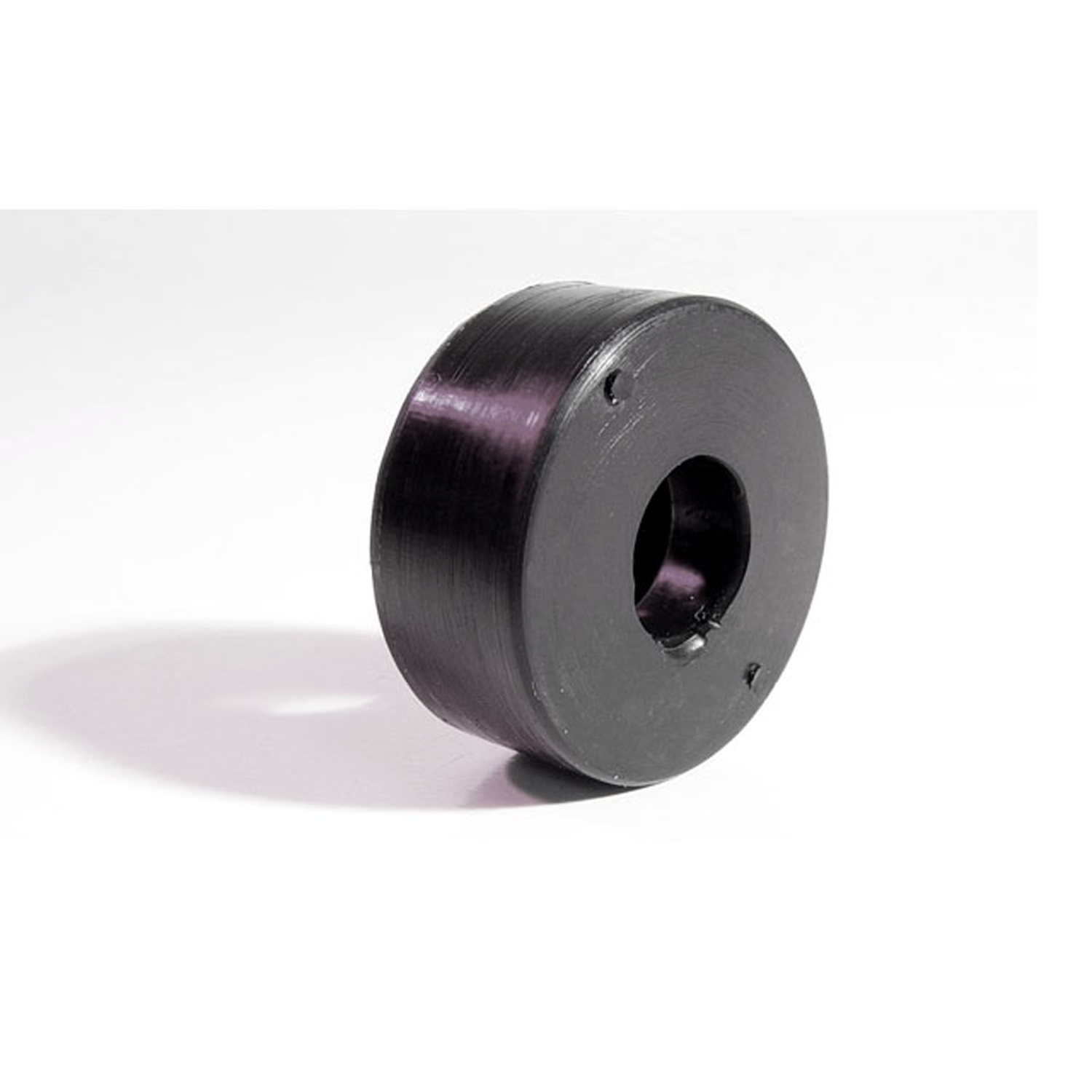 1966 American Motors Marlin Hood Bumper. Each-HF 85Hood Bumper. Each
1966 American Motors Marlin Hood Bumper. Each-HF 85Hood Bumper. Each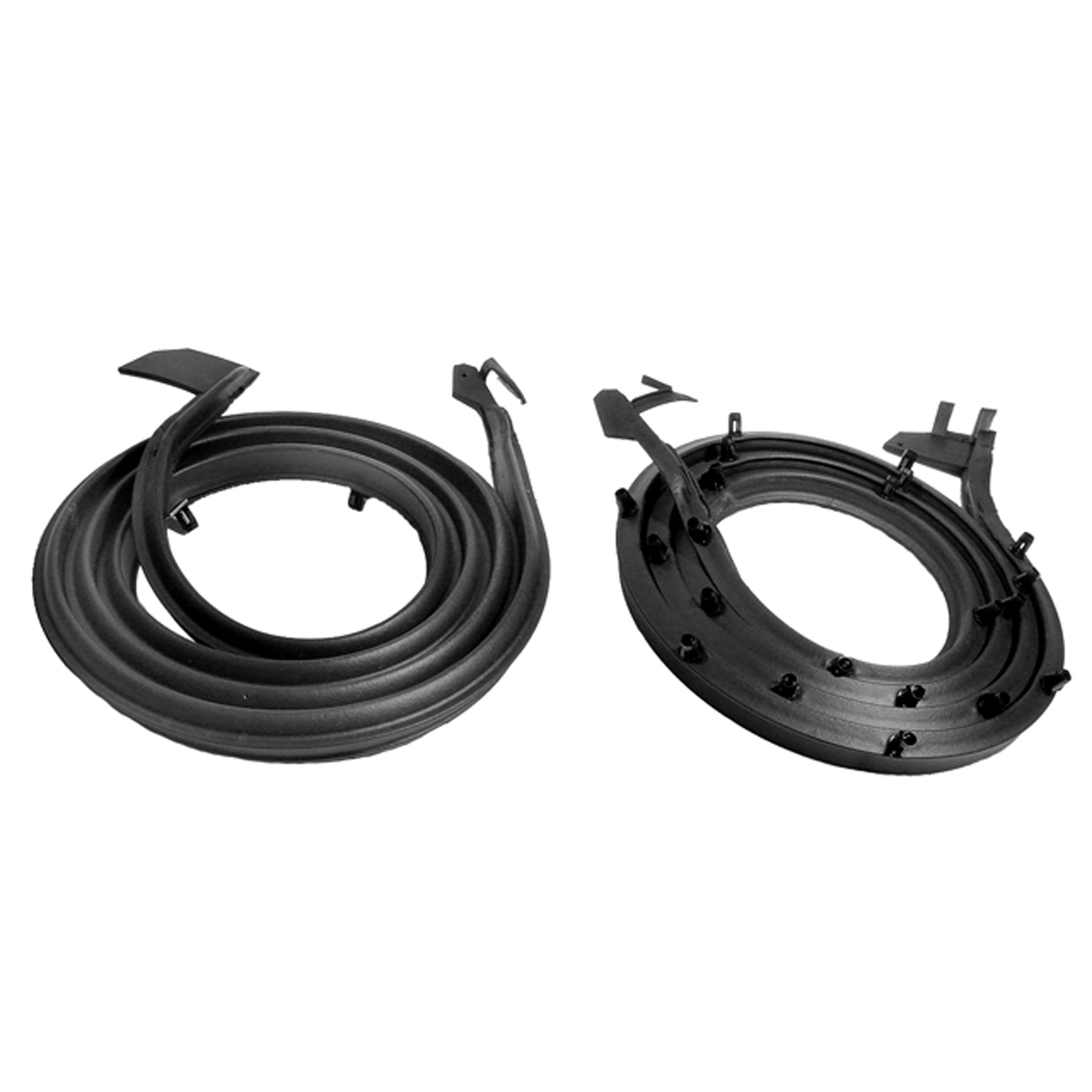 1966 American Motors Marlin Door seals-LM 31-MDoor seals. For '65-'66 Ambassador, Classic and Marlin 2-door hardtop and convertible. Proper clips correctly positioned. Pair. R&L.
1966 American Motors Marlin Door seals-LM 31-MDoor seals. For '65-'66 Ambassador, Classic and Marlin 2-door hardtop and convertible. Proper clips correctly positioned. Pair. R&L.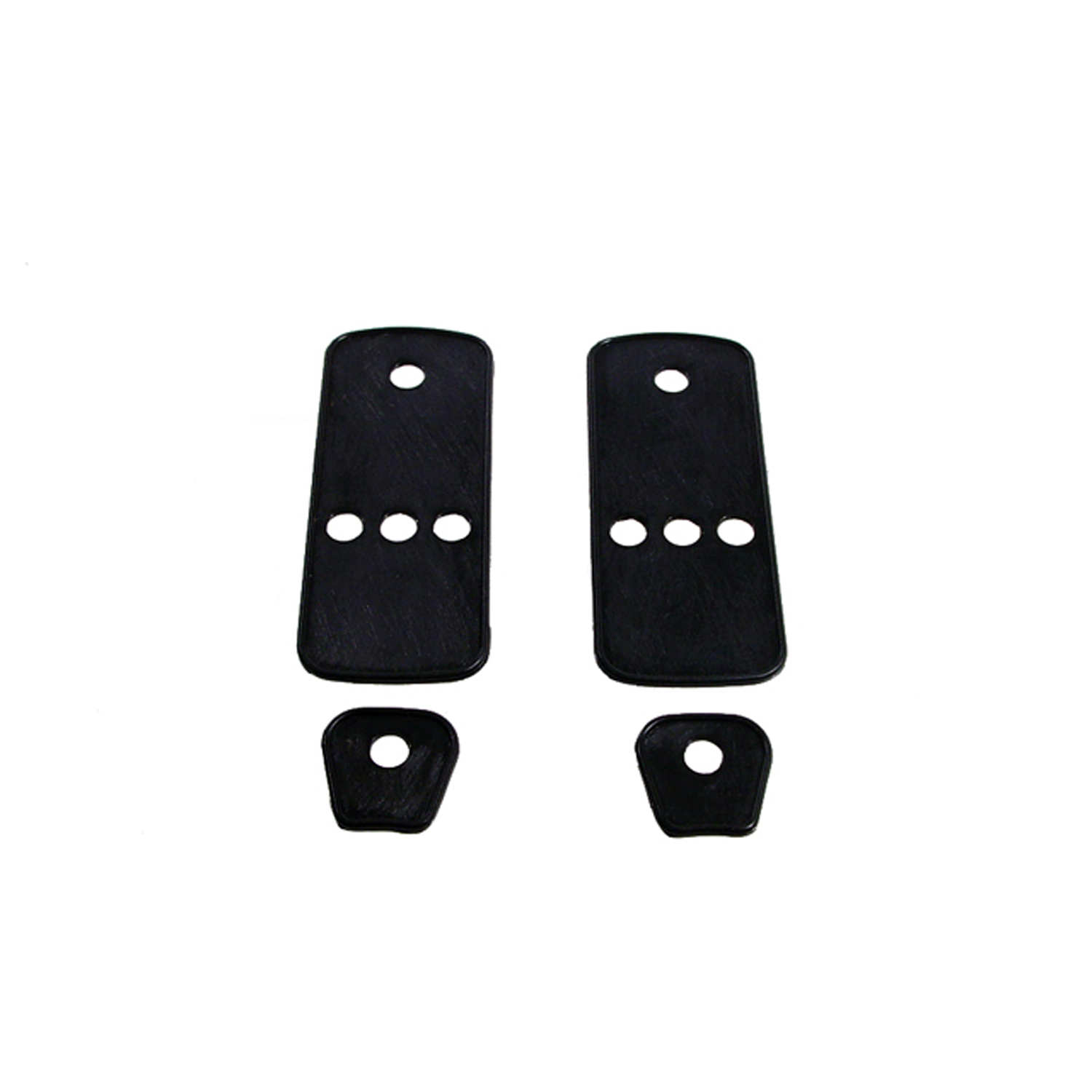 1966 American Motors Marlin Door Handle Pads. Set-MP 107Door Handle Pads. Set
1966 American Motors Marlin Door Handle Pads. Set-MP 107Door Handle Pads. Set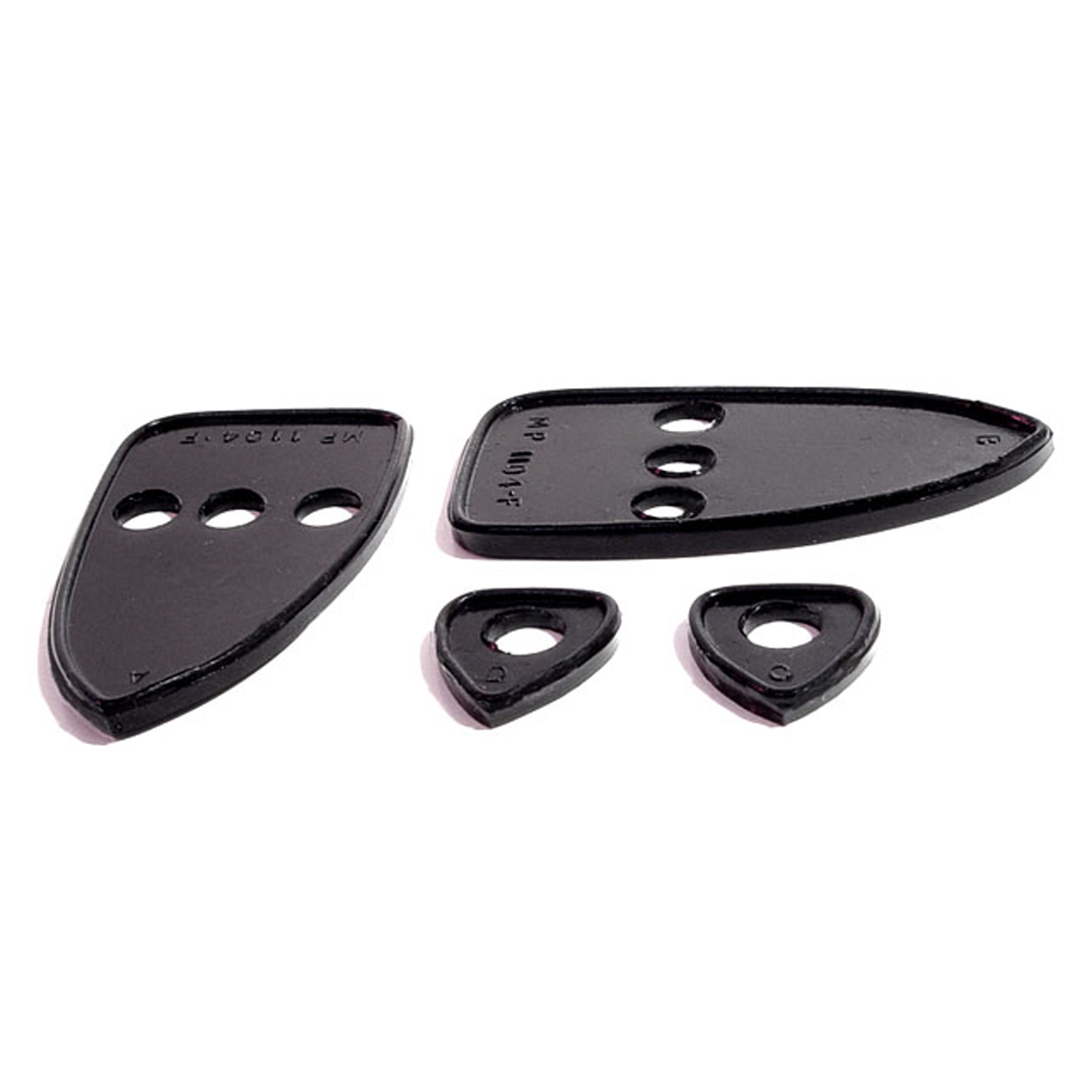 1966 American Motors Marlin Door Handle Pads. 2-3/4" long & 7/8" long. Set R&L-MP 1104-FDoor Handle Pads. 2-3/4" long & 7/8" long. Set R&L
1966 American Motors Marlin Door Handle Pads. 2-3/4" long & 7/8" long. Set R&L-MP 1104-FDoor Handle Pads. 2-3/4" long & 7/8" long. Set R&L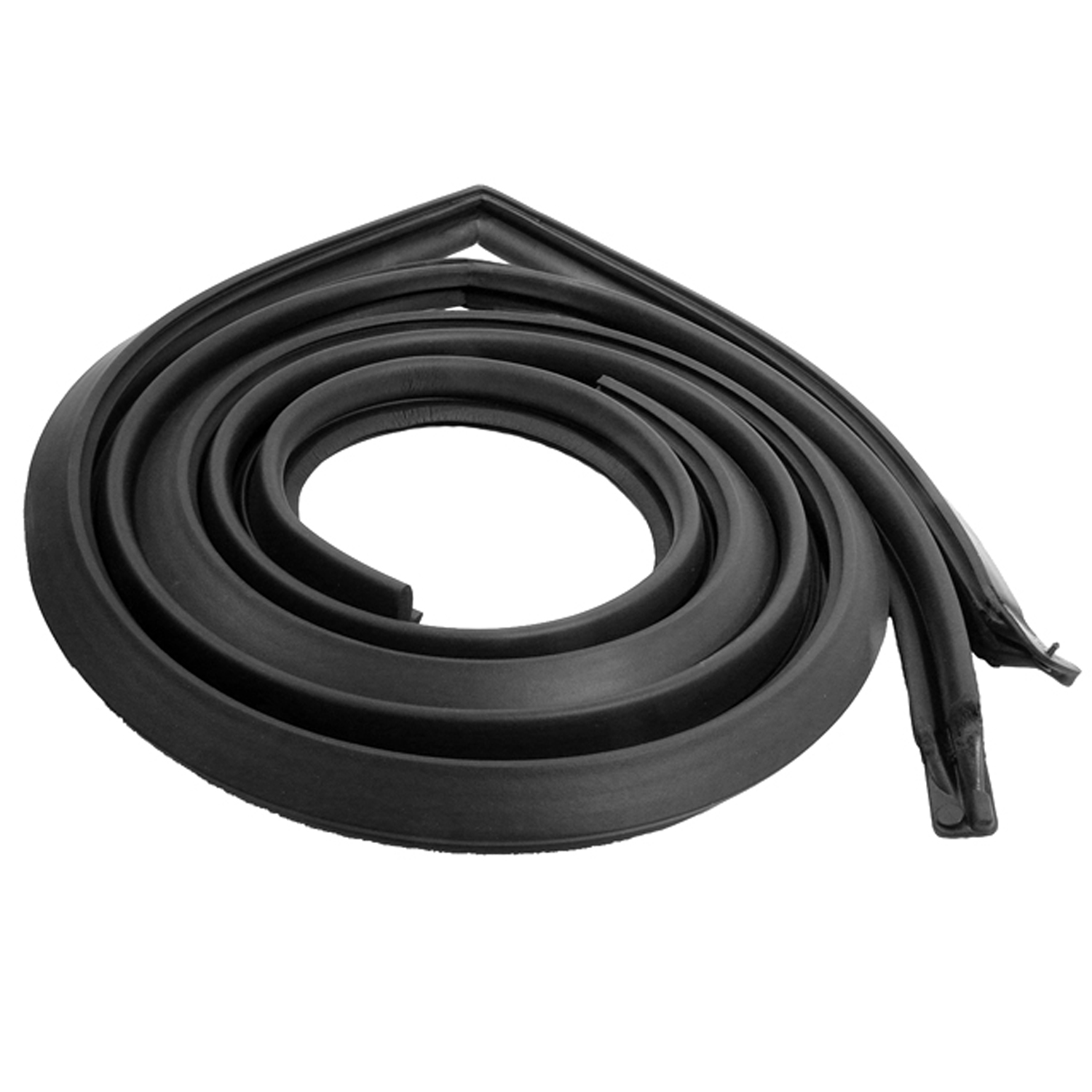 1966 American Motors Marlin Roof Rail Seals, for 2-Door Hardtop. Pair-RR 101-LRoof Rail Seals, for 2-Door Hardtop. Pair
1966 American Motors Marlin Roof Rail Seals, for 2-Door Hardtop. Pair-RR 101-LRoof Rail Seals, for 2-Door Hardtop. Pair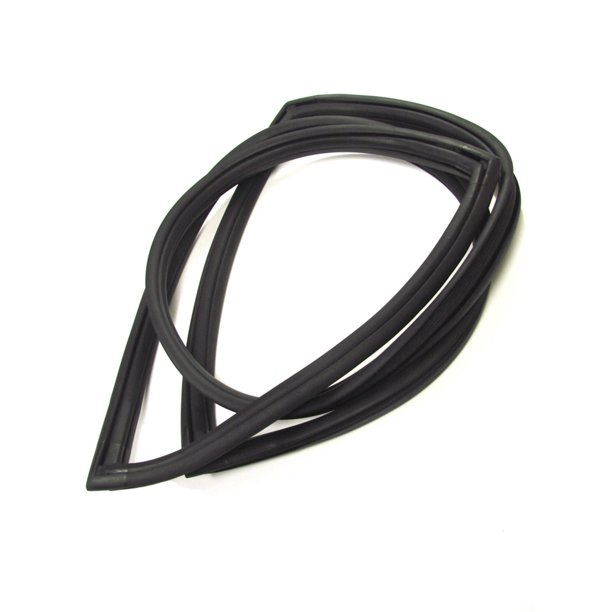 1966 American Motors Marlin Vulcanized Windshield Seal Fits 64-66 AMC Ambassador Hardtop-VWS 0625Windshield Weatherstrip Seal w/Trim Groove For Steel Trim. 64-66 AMC Ambassador Hardtop only.
1966 American Motors Marlin Vulcanized Windshield Seal Fits 64-66 AMC Ambassador Hardtop-VWS 0625Windshield Weatherstrip Seal w/Trim Groove For Steel Trim. 64-66 AMC Ambassador Hardtop only.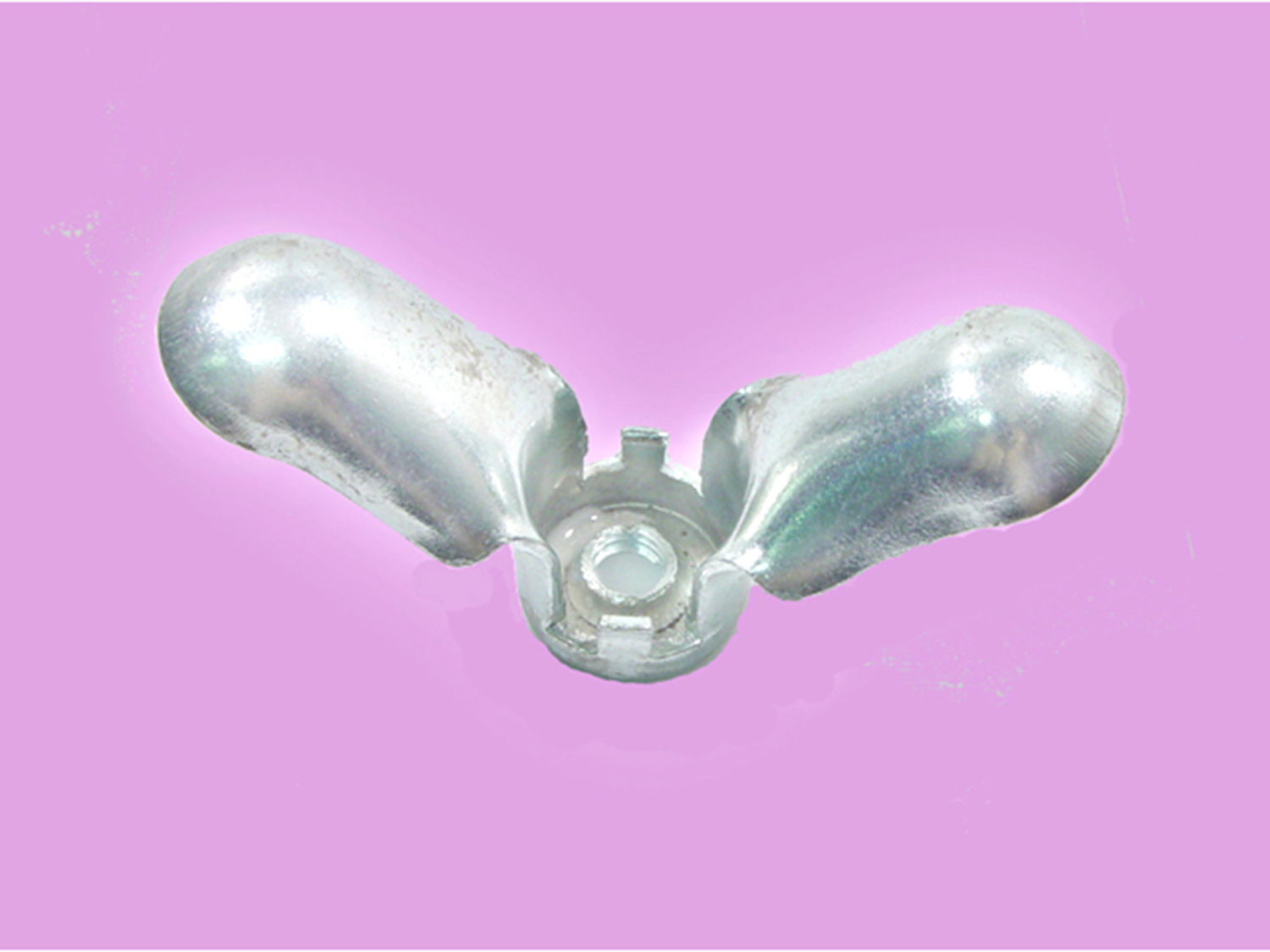 1966 American Motors Marlin Spare Tire Hold Down Nut. 5/16- 18 thread size-WF 3506Spare Tire Hold Down Nut. 5/16- 18 thread size. Replaces OEM #3198901. Each
1966 American Motors Marlin Spare Tire Hold Down Nut. 5/16- 18 thread size-WF 3506Spare Tire Hold Down Nut. 5/16- 18 thread size. Replaces OEM #3198901. EachWhy Choose Metro?
For over 100 years, Metro Moulded Parts has been the pinnacle of quality in classic car restoration parts. Our commitment to precision and authenticity in every component ensures a perfect fit and an OEM-level appearance.
- Expert Craftsmanship & Quality: Each part is a testament to our dedication to reliability and perfection, crafted from original designs and thoroughly tested.
- Advanced Technology: We use cutting-edge techniques to create flawless, long-lasting parts that surpass others in performance.
- SuperSoft Sponge – The Ultimate Door Seal: Not only are our door seals 30% softer than competitors', but they're also guaranteed to never leak. They effectively reduce wind and road noise, enhancing your classic car's comfort and driving experience.
- Proudly American: Our parts are a product of American craftsmanship, made in the USA with a spirit of excellence and heritage.
- Unrivaled Warranty: We back our products with a 30-year industry-leading warranty, a testament to our confidence in their quality.
Join us in preserving the legacy of classic cars with parts that are crafted for perfection, not just made.

